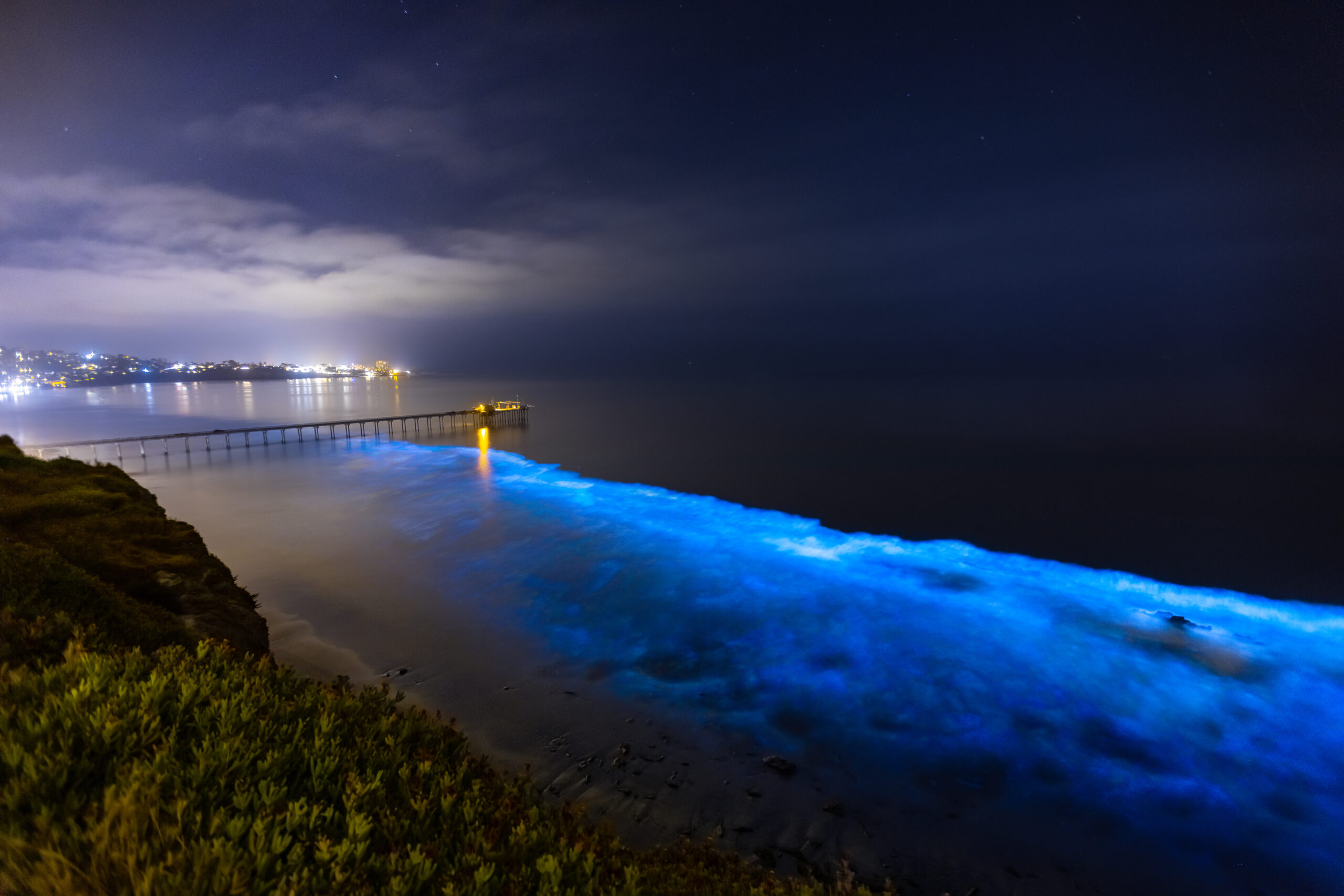Discovering bioluminescence, one of nature’s most stunning occurrences has captivated tourists and environmentalists for ages. It’s the ethereal glow that some living things release; it frequently lights up the water’s edge in a kaleidoscope of colors, reminiscent of scenes from fantasy books. Where are the finest locations to see this natural show, and what produces it? Let us explore the dazzling realm of bioluminescence.
Bioluminescence: What Is It?
The generation and emission of light by living things is known as bioluminescence. This light is produced by a chemical process taking place inside the organism, namely between the enzyme luciferase and the light-emitting molecule luciferin. This event is not exclusive to aquatic life. Indeed, it is present in a wide variety of animals, including mushrooms that glow in the dark woodlands and fireflies that flutter in the night.
There are a lot of bioluminescent creatures in the sea environment. Diverse organisms, ranging in size from tiny plankton to larger species like jellyfish or comb jelly, may emit light, and the ocean is full of them. This light is often used for a purpose, such as enticing prey, warding off predators, or locating a mate.
Best Places to Witness Bioluminescence
Mosquito Bay, Vieques, Puerto Rico:
Mosquito Bay, the brightest bioluminescent bay according to Guinness World Records, is a remarkable sight. Every movement in the water produces a brilliant blue-green glow during moonless evenings because of the abundance of tiny creatures known as dinoflagellates.
Tomales Bay, California:
For many Americans, Tomales Bay provides an opportunity to see bioluminescence closer to home. It is situated just north of San Francisco. The waters of this bay can sparkle magnificently on dark evenings, especially if a strong wind has churned up the nutrients.
The Maldives:
It’s well known that the beaches of numerous Maldivian islands have a blue sheen. When the tiny plankton in this area are disturbed by waves or movement, they release neon blue light that resembles the stars in the night sky.
Australia’s Jervis Bay:
This bay in New South Wales is transformed into a neon show on specific evenings. Not only do the dinoflagellates in these waters shine vivid blue, but they also draw dolphins, who follow the glowing fish.
Toyama Bay, Japan:
While many places showcase blue or green luminescence, Toyama Bay is unique for its glowing firefly squids. These tiny squids, measuring only a few inches, come to the surface during spring and create a radiant blue spectacle.
Ideal Times to Go
Even though bioluminescence is frequently unpredictable, there are specific seasons of the year when you are more likely to see this marvel:
In Mosquito Bay, a darker night is preferable. Avert nights with a full moon. The best time is in between new moon phases.
Tomales Bay: The ideal seasons are late summer and fall, particularly following a windstorm.
The Maldives: During the new moon, especially between July and February, the occurrence occurs most frequently.
Jervis Bay: The bioluminescence is most visible during the warm summer months.
March to June is when the firefly squids appear in Toyama Bay.
A tribute to the wonders of nature is bioluminescence. It is an experience unlike any other to stand on a beach and watch the waves shimmer with an otherworldly light, or to kayak through seas that change color with each stroke of the paddle. But it’s imperative that we treat these locations with respect, making sure we don’t harm the creatures that give them their glow or the natural habitats. By taking responsible action, these places can continue to be radiant wonders for future generations. So pick a location, schedule your visit around the new moon, and get ready to be enthralled with the bioluminescence’s dancing lights.

